Table of Contents[Hide][Show]
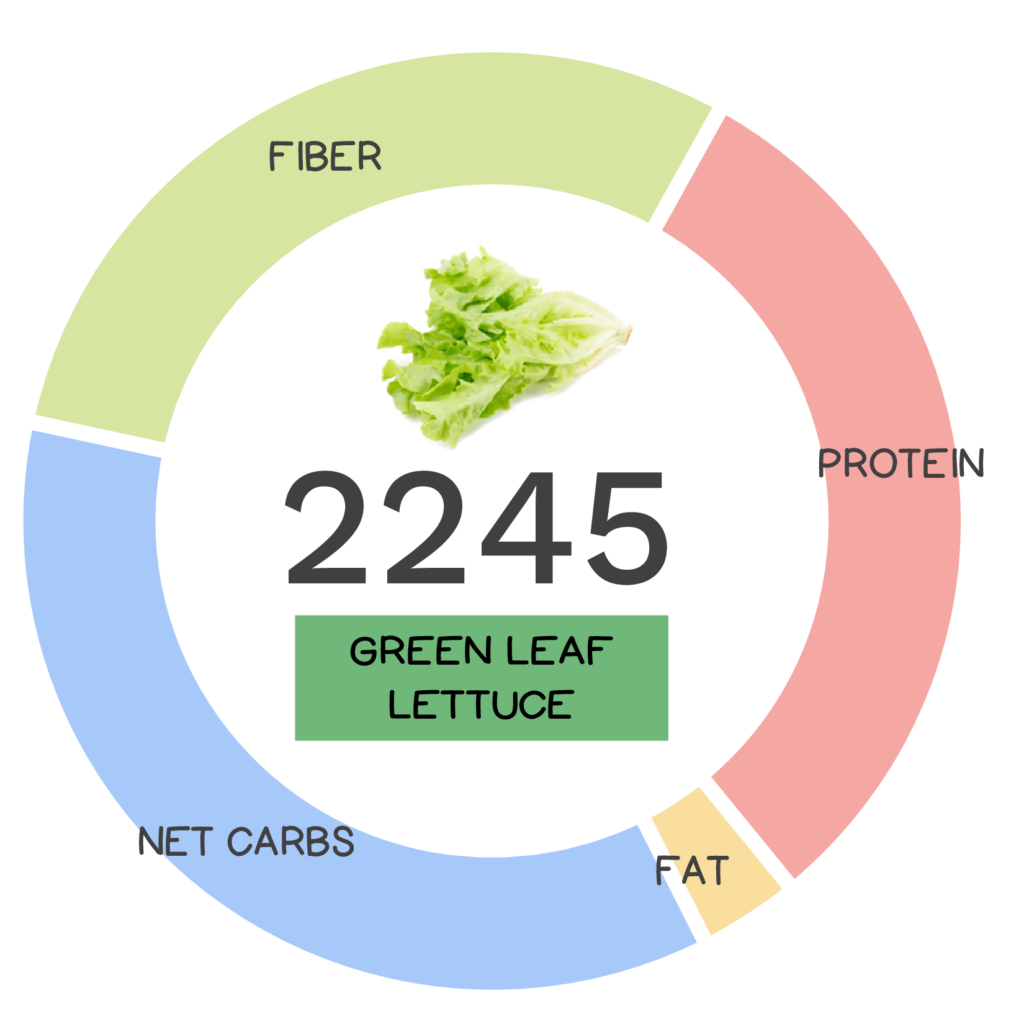
Think lettuce is boring? Not so fast! What most of us know about lettuce is just the tip of the “iceberg.” (Hyuck!) Lettuce comes in a wide range of shapes and textures, from the dense heads of iceberg to the loosely bunched frilly and ruffly leaves of leaf lettuce with all sorts of colors, ranging from numerous shades of green to reds and deep purples. With all of these options available it may surprise you to learn that on average Americans only consume ~25 pounds of lettuce per year (and half of that is iceberg)!
Lettuce was first farmed in Ancient Egypt as early as 2680 BC, where it was used for its leaves and harvesting oil from its seeds.
Lettuce (Lactuca sativa) is technically a member of the daisy family and was first farmed in Ancient Egypt as early as 2680 BC, where it went from being a wild-growing weed to a food crop used for its leaves and harvesting oil from its seeds. From there, lettuce spread to the Romans and Greeks. The Romans referred to lettuce as lactuca (lac meaning dairy in Latin) because of the white milky fluid discharged by cut stems. In many cultures, lettuce was considered a sacred plant and it appears in many medieval writings, especially as a medicinal herb. Lettuce was first brought to the Americas by Christopher Columbus in the late 15th century. The domestication of lettuce over the centuries has resulted in several changes through selective breeding including larger leaves and heads, different leaf shapes and colors, better taste and texture, and a lower latex content, with subsequent impacts on nutrition.
The Best Support to Build This Important Daily Habit!

Nutrivore Salad-a-Day Challenge
The Nutrivore Salad-a-Day Challenge e-book explains all the ways a daily salad can improve your health, plus includes a collection of 10 handy visual guides and food lists, like the Nutrivore Salad Matrix.
Plus, you’ll find 50+ recipes, including over 30 of our favorite salad recipes plus recipes for delicious dressings and tasty toppers.
Buy now for instant digital access.
Nutrivore Score for Green Leaf Lettuce – 2245
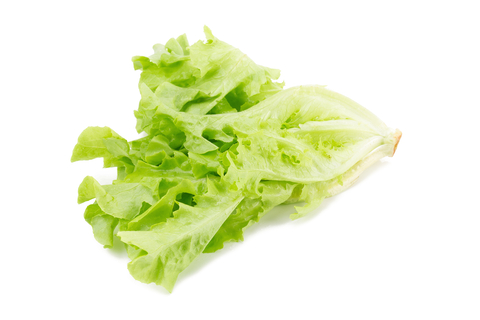
Green leaf lettuce has a Nutrivore Score of 2245, making it a super nutrient-dense food! Plus, it is a low-carb and low-calorie-density food; amazingly the calorie count of green leaf lettuce is just an astounding 5.5 calories per cup!
Per serving, green leaf lettuce is a best source (>50% daily value) of vitamin K; an excellent source (20-50% daily value) of carotenoids and vitamin A; and is a good source (10-20% daily value) of polyphenols.
Ditch Diets. Embrace Nutrients. Start with this FREE Guide.
Sign up for the free Nutrivore Newsletter, your weekly, science-backed guide to improving health through nutrient-rich foods — without dieting harder —and get the Beginner’s Guide to Nutrivore delivered straight to your inbox!

Green Leaf Lettuce Nutrition Facts
One serving of green leaf lettuce is standardized to 2 cups or about 72 grams (2.5 ounces). A typical head of green leaf lettuce weighs 360 grams, which is equivalent to 5 servings.
Green Leaf Lettuce Nutrition Facts Per Serving
| Lettuce, green leaf, raw | Nutrivore Score: 2245 | Nutrient Density: Super! |
|---|---|---|
| Serving Size: 2 cups (72 grams) | Protein: 1.0 grams | Net Carbohydrates: 1.1 grams |
| Calories: 11 | Total Fat: 0.1 grams | Dietary Fiber: 0.9 grams |
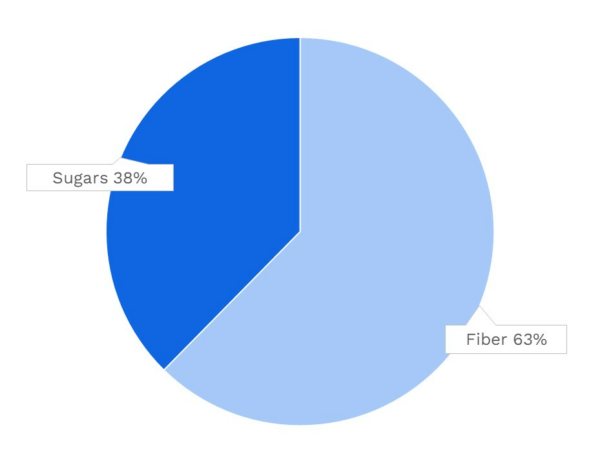
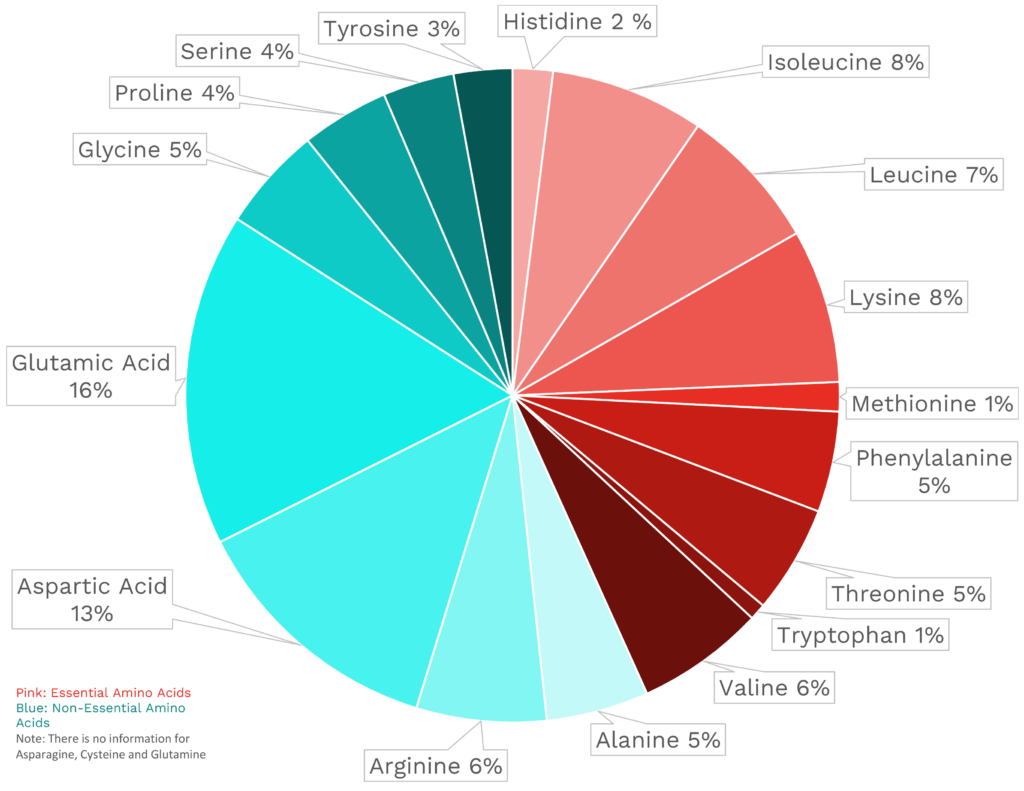
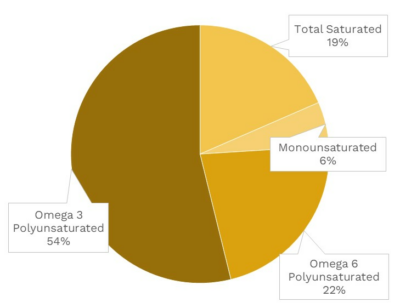
| VITAMINS | ||
|---|---|---|
| Vitamin A | 266.4 μg RAE | 30% DV |
| Vitamin B1 (Thiamin) | 50.4 μg | 4% DV |
| Vitamin B2 (Riboflavin) | 57.6 μg | 4% DV |
| Vitamin B3 (Niacin) | 0.3 mg | 2% DV |
| Vitamin B5 (Pantothenic Acid) | 0.1 mg | 2% DV |
| Vitamin B6 (Pyridoxine) | 64.8 μg | 4% DV |
| Vitamin B7 (Biotin) | 2.1 μg | 7% DV |
| Vitamin B9 (Folate) | 27.4 μg | 7% DV |
| Vitamin B12 (Cobalamin) | 0.0 μg | 0% DV |
| Vitamin C | 6.6 mg | 7% DV |
| Vitamin D (D2 + D3) | 0.0 μg | 0% DV |
| Vitamin E | 0.5 mg | 3% DV |
| Vitamin K | 90.9 μg | 76% DV |
| Choline | 9.8 mg | 2% DV |
| Myo-Inositol | 13.0 mg | ~ |
| CoQ10 | ~ | ~ |
| FUNCTIONAL FATS | ||
|---|---|---|
| MUFA | 0.0 g | 0% DV |
| ALA | 41.8 mg | 3% DV |
| EPA + DHA | 0.0 mg | 0% DV |
| CLA | ~ | ~ |
| Linoleic Acid | 0.0 g | 0% DV |
| MCT’s | 0.0 g | ~ |
| MINERALS | ||
|---|---|---|
| Calcium | 25.9 mg | 2% DV |
| Copper | 20.9 μg | 2% DV |
| Iodine | ~ | ~ |
| Iron | 0.6 mg | 3% DV |
| Magnesium | 9.4 mg | 2% DV |
| Manganese | 180.0 μg | 8% DV |
| Phosphorus | 20.9 mg | 2% DV |
| Potassium | 139.7 mg | 3% DV |
| Selenium | 0.4 μg | 1% DV |
| Sodium | 20.2 mg | 1% DV |
| Zinc | 0.1 mg | 1% DV |
| PHYTONUTRIENTS | ||
|---|---|---|
| Carotenoids | 4444.6 μg | ~ |
| Polyphenols | 94.3 mg | ~ |
| Phytosterols | 6.1 mg | ~ |
| Glucosinolates | ~ | ~ |
| Thiosulfinates | ~ | ~ |
| Betalains | ~ | ~ |
| AMINO ACIDS & PEPTIDES | ||
|---|---|---|
| Taurine | ~ | ~ |
| Ergothioneine | ~ | ~ |
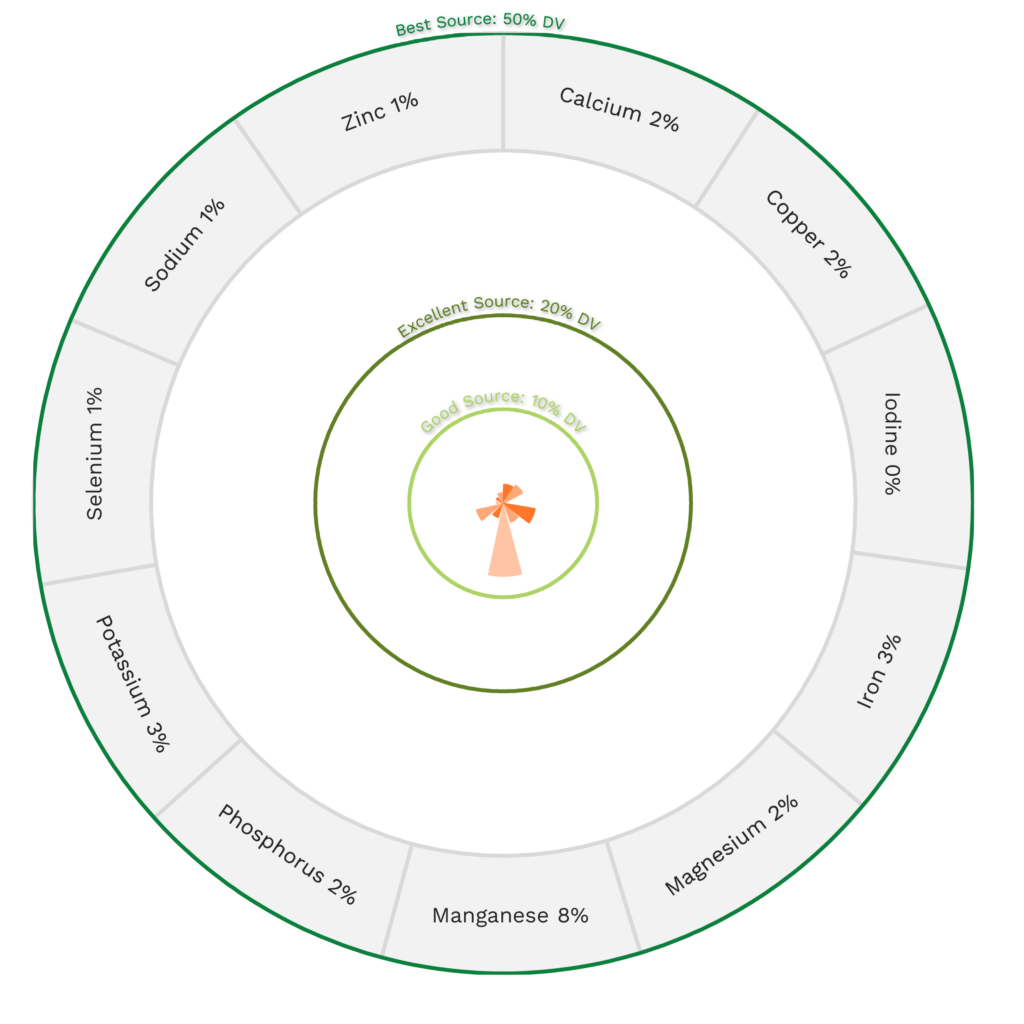
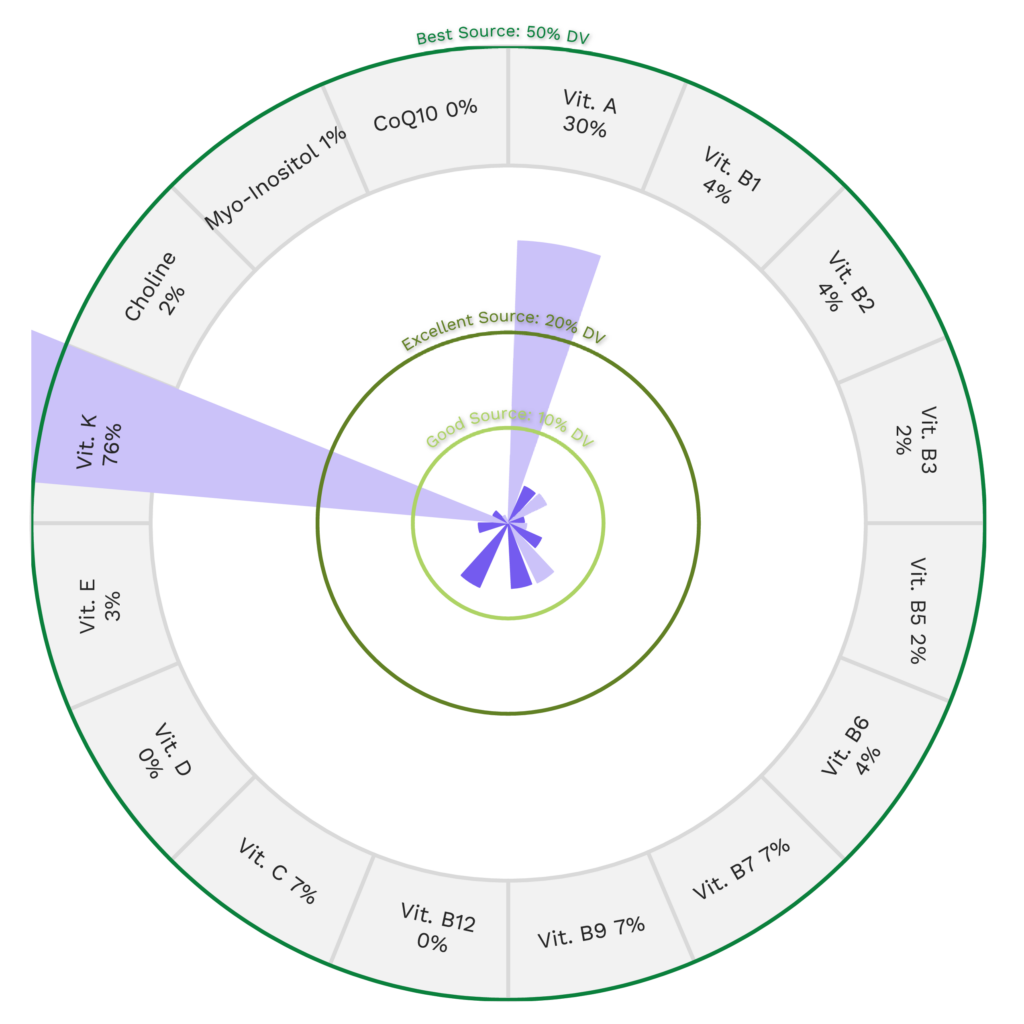
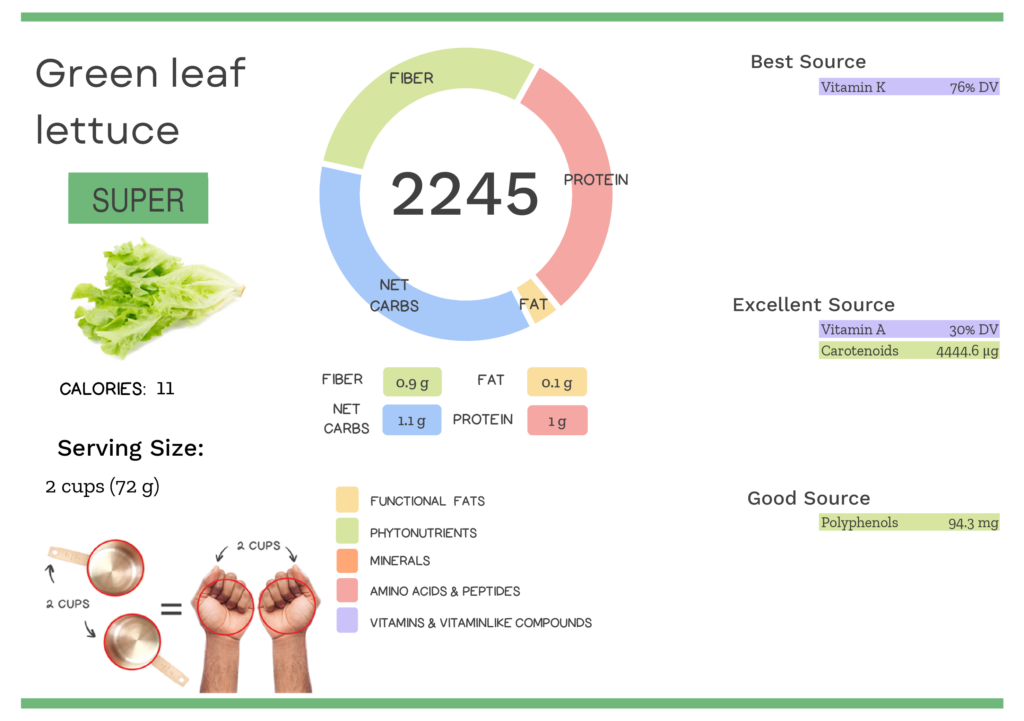
Feel Good About What You Eat—Without Overthinking It

Nutrivore90 is a FREE 90-day habit-centered challenge focused on adding nutrient-dense foods, not cutting things out.
- No tracking, no food rules—just small steps that actually stick
- Weekly emails, printable guides, and a supportive community—all completely free.
- Nutrivore90 starts January 5th, 2026!!
Lettuce Nutrition Varies With Variety
There are many varieties of lettuce, all with different nutrient profiles, which means their Nutrivore Scores vary too! Overall, lettuce is packed with nutrition and even though we may think of lettuce as merely filler, especially since it’s 95% water, calorie-for-calorie it is a nutrient-dense superfood and deserves to be put front and center!
| NUTRIVORE SCORE | |
|---|---|
| Butterhead lettuce, raw (includes Boston and bibb types) | 1934 |
| Green leaf lettuce, raw | 2245 |
| Iceberg lettuce, raw (includes crisphead types) | 773 |
| Red leaf lettuce, raw | 2684 |
| Romaine (or cos) lettuce, raw | 2128 |
Impressed by the unbe-LEAF-able nutrition in lettuce? Maybe your friends will be too!
Health Benefits of Green Leaf Lettuce Nutrients
Let’s take a closer look at all of the best and excellent source of nutrients found in a 2-cup serving of green leaf lettuce and see how they benefit our health.
Green Leaf Lettuce Provides 76% DV Vitamin K
Green leaf lettuce is a fantastic source of vitamin K, providing 76% of the daily value per 2-cup serving!
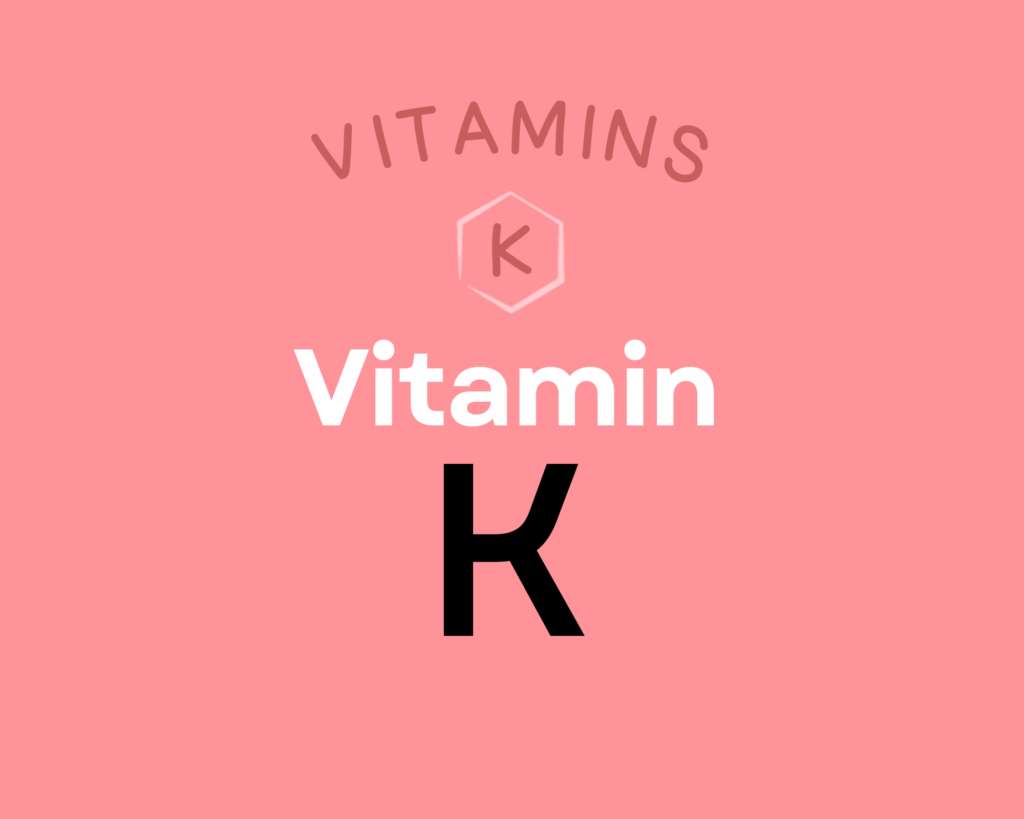
Vitamin K is actually a group of fat-soluble vitamins with a similar molecular structure, existing as K1, multiple isoforms of K2, and the synthetic form K3. This nutrient plays a vital role in coagulation, due to serving as a cofactor for proteins needed for blood clotting; it’s also essential for bone metabolism, cellular function, and the prevention of soft tissue calcification. Getting enough vitamin K2 can help protect against cardiovascular disease, may improve bone mineral density and skeletal health, and may even support endocrine function and brain health; there’s also some limited evidence it has anti-cancer and anti-inflammatory properties. Learn more about vitamin K here.
Green Leaf Lettuce Provides 4444.6 μg of Carotenoids
Green leaf lettuce is an excellent source of carotenoids, providing an impressive 4444.6 μg of carotenoids (including lutein, lactucaxanthin, and β-carotene) per 2-cup serving!
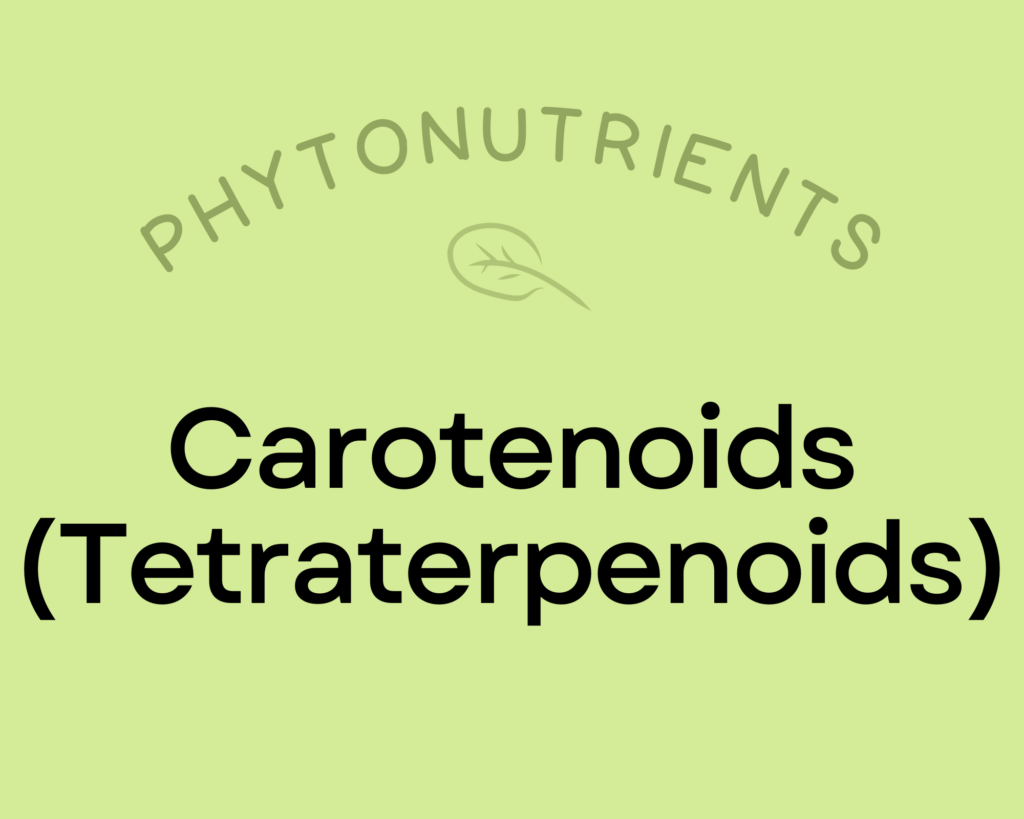
Carotenoids are a diverse group of phytonutrients that are responsible for giving fruits and vegetables vibrant red, orange, and yellow pigmentation. They were one of the earliest phytonutrients ever investigated by scientists (with research dating back to the 1800s!). Across studies, eating foods high in carotenoids appears to reduce the risk of head and neck cancers, supports vision health (particularly age-related eye diseases), may protect against metabolic syndrome and diabetes, and can reduce inflammation. Carotenoids have strong antioxidant properties, and help facilitate communication between cells by promoting the synthesis of connexin proteins, which create gap junctions in cell membranes that allow small molecules to be exchanged (which is part of how cells “talk” to each other!). Consuming carotenoids with fat significantly increases their absorption. Learn more about carotenoids here.
Green Leaf Lettuce Provides 30% DV Vitamin A
Green leaf lettuce is also an excellent source of vitamin A, providing 30% of the daily value per 2-cup serving!

Vitamin A is actually a group of fat-soluble retinoids with vitamin A activity in the body. This nutrient is essential for a number of physiological functions—particularly vision, reproduction, thyroid health, immunity, and cellular communication. Getting enough vitamin A helps protect against some vision disorders (like night blindness and macular degeneration), supports a healthy menstrual cycle and sperm production, reduces infection risk, and allows for proper growth and development from the fetal years through childhood. Learn more about vitamin A here.
Learn What Foods Are the Best Sources of Every Nutrient

The Top 25 Foods for Every Nutrient
The Top 25 Foods for Every Nutrient e-book is a well-organized, easy-to-use, grocery store-friendly guide to help you choose foods that fit your needs of 43 important nutrients while creating a balanced nutrient-dense diet.
Get two “Top 25” food lists for each nutrient, plus you’ll find RDA charts for everyone, informative visuals, fun facts, serving sizes and the 58 foods that are Nutrient Super Stars!
Buy now for instant digital access.
How Much Green Leaf Lettuce Should We Eat Per Day?
Leafy greens may come from a variety of different taxonomic families, but they all have one thing in common – when it comes to nutritional bang for calorie buck, they are hard to beat!
Every serving of fresh, whole vegetables or fruit we eat daily reduces the risk of all-cause mortality by 5% to 8%, with the greatest risk reduction seen when we consume five or more servings per day. In fact, consuming 800 grams of vegetables and fruits daily reduces all-cause mortality by 31% compared to eating less than 40 grams daily. A 2017 meta-analysis showed that 2.24 million deaths from cardiovascular disease, 660,000 deaths from cancer, and 7.8 million deaths from all causes could be avoided globally each year if everyone consumed 800 grams of veggies and fruits every day.
Eating vegetables and fruit in abundance lowers risk of cancer, cardiovascular disease, type 2 diabetes, obesity, chronic kidney disease, osteoporosis and bone fragility fractures (including hip fracture), cognitive impairment and dementia (including Alzheimer’s disease), neurodegenerative diseases, asthma, allergies, chronic obstructive pulmonary disease, age-related macular degeneration, cataracts, glaucoma, depression, ulcerative colitis and Crohn’s disease, rheumatoid arthritis, inflammatory polyarthritis, non-alcoholic fatty liver disease, acne, seborrheic dermatitis, and lowers markers of inflammation. Learn more in Importance of Vegetables and Fruit.
Covering half of your plate with a variety of vegetables (and three quarters of your plate if your starchy food is a root vegetable or winter squash) at each meal is a simple way to easily achieve the goal of 5 or more servings of vegetables daily.
One to two servings per day of leafy greens is a great target, but there doesn’t seem to be any downside to consuming way more than that!
Studies show that leafy greens (like green leaf lettuce) offer a huge range of scientifically demonstrated health benefits. For instance, for every 1/3 cup of leafy greens you eat each day you reduce the risk of type 2 diabetes by 13%. Leafy green consumption has also been associated with a 40% lower risk of death from colorectal cancer in men, a 16% reduction in cardiovascular disease and slower cognitive decline in elderly adults. Amazingly, an average of only 1.3 servings per day was associated with the equivalent of being 11 years younger in cognitive age! Taking this all into account means that one to two servings per day of leafy greens (like green leaf lettuce) is a great target, but there doesn’t seem to be any downside to consuming way more than that!
Just remember, it’s always best to mix up the veggies you eat day to day (aiming for a wide variety of different vegetables and fruits throughout the week), and green leaf lettuce definitely has a place at the table.
Easily track your servings of Nutrivore Foundational Foods!

The Nutrivore Weekly Serving Matrix
The Nutrivore Weekly Serving Matrix digital resource is an easy-to-use and flexible weekly checklist designed to help you maximize nutrient-density and meet serving suggestions of Nutrivore foundational foods, all without having to weigh or measure your foods!
Includes a 22-page instructional guide and downloadable interactive guides.
Buy now for instant digital access.
Citations
Expand to see all scientific references for this article.
Clements RS Jr, Darnell B. Myo-inositol content of common foods: development of a high-myo-inositol diet. Am J Clin Nutr. 1980 Sep;33(9):1954-67. doi: 10.1093/ajcn/33.9.1954. PMID: 7416064.
Phenol-Explorer: Lettuce [Green], raw
Piironen V, Toivo J, Puupponen-Pimia R, Lamp AM. Plant sterols in vegetables, fruits and berries. Journal of the Science of Food and Agriculture. 2003. Vol 83(4):330-337. doi:10.1002/jsfa.1316
USDA Food Central Database: Lettuce, green leaf, raw
Watanabe T, Kioka M, Fukushima A, Morimoto M, Sawamura H. Biotin content table of select foods and biotin intake in Japanese. Int J Anal Bio-Sci. 2014. Vol 2(4):109-125.


